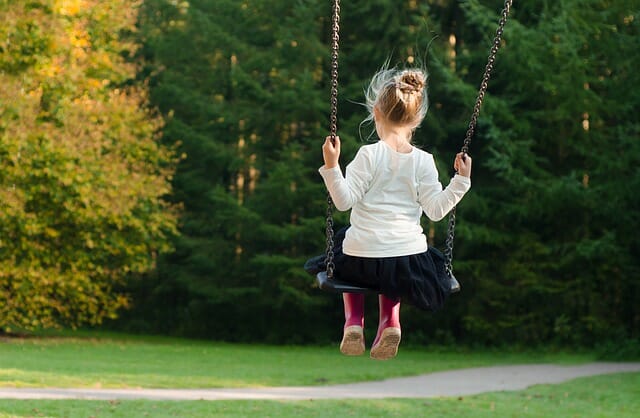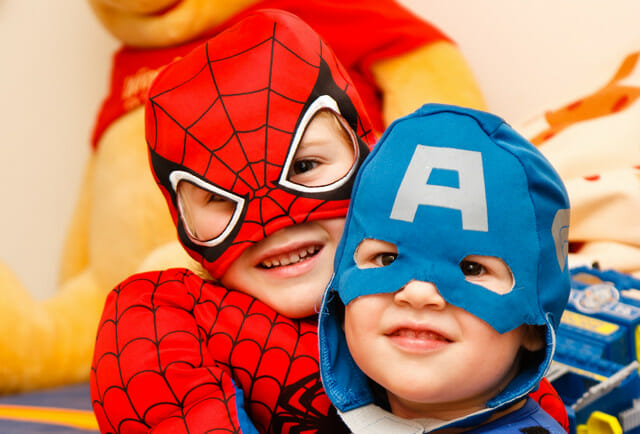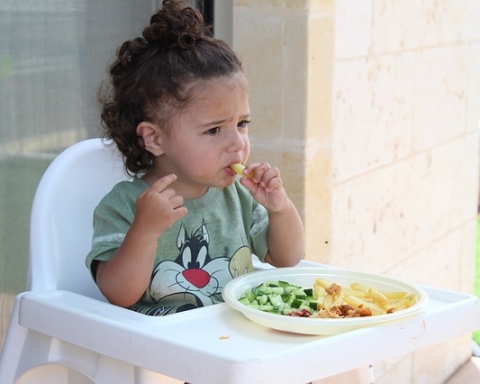Besides being held, rocking is another integral movement that comforts babies. The rhythmic and gentle motions are a part of the positive parenting solutions that help parents soothe their babies. It also helps relieve colic in babies and helps parents put their babies to sleep quickly.
Toddlers, and even adults, enjoy swinging and rocking sensations. Children love going to parks to play on the swings, slides, and rides there. Swinging, in particular, is not just a fun activity, but it also can be extremely therapeutic.
Swinging and Its Impact on the Brain and Body
Swinging enables children to feel the pull of gravity, sense equilibrium, and experience other sensations like movement. It increases children’s awareness of their bodies, and they experience distinct sights and sounds.
The brain receives multiple sensations from its surroundings nearly every minute. The brain is only able to act on this information when it can decipher, arrange, and correlate it. Sensory integration is the process by which the brain organizes and interprets all these sensations and synthesizes all this information. It occurs naturally in most people, but in conditions like autism, sensory integration doesn’t operate properly. Positive parenting solutions include finding ways to maximize children’s sensory integration.
One research study recommends that parents and caregivers of infants with delayed or slow motor development should “spend more time carrying the baby … and swinging to activate head control and muscles.”
What Is Sensory Integration, and Why Is It Important?
Sensory integration enables people to process complex information, which allows complex learning to take place. It forms the basis of sophisticated behavior patterns as well. Consequently, the modern-day Montessori curriculum contains a lot of sensory activities in order to stimulate toddlers’ senses of touch, sound, smell, and sight.
However, most public spaces like schools, playgrounds, and parks are bereft of swings because administrations consider them a waste of space, somewhat dangerous, and a bigger liability to maintain. This trend not only deprives children of fun, but it also denies them invaluable therapeutic benefits.
Here are some of the health benefits of swings:
- Swinging impacts the core in a positive way because of the pull of gravity.
- Swinging strengthens the neck and back muscles.
- The vestibular stimulation improves balance and equilibrium. According to research, “Vestibular stimulation was effective in improving postural control, movement, emotional well-being, and social participation of a child with hypotonic cerebral palsy.”
- It provides proprioception stimulation.
- It has a distressing and calming effect on the body.
- It eases the pressure on the backbone and helps the body relax.
- It integrates the use of the five senses.
- It improves the spatial ability of the body and mind.
- It improves gross motor skills, such as sitting straight and moving the legs rhythmically.
- Holding on to the rope enhances fine motor skills and strengthens the grip.
- It enables better muscular control.
- It helps the body develop a certain rhythm and enjoy it.
- It draws children’s attention to distant objects and improves their visual perception and focus.
Baby swings are well-supported, and they are pretty safe. Still, parents need to keep an eye on their babies and toddlers when they are in a swing. Children should not use swings unsupervised.
Parents should introduce children to park swings gradually. The parents or an older sibling or peer can push the swing for the child until he or she feels safe and has established a swinging rhythm. Gentle pushing is recommended in the initial stages; however, the child needs to gradually gain control of the process.
Install a swing in the backyard if there is space available. Outdoor swings are a great way for children to get a break from the indoors, electronics, and gadgets. Being outdoors also gives children the chance to see the open blue skies, feel the breeze, and be out in the sunshine (which provides vitamin D). Children are thus able to get some exercise as well as have fun.
Swinging, in particular, is not just a fun activity, but it also can be extremely therapeutic.
References
- Sun-Joung, Leigh. “The Effects of Vestibular Stimulation on a Child with Hypotonic Cerebral Palsy.” Journal of Physical Therapy Science 27, no. 4 (2015): 1279–1282. Retrieved from https://bit.ly/2toEhaH
- Roley, Susanne Smith, M. S. Mary Singer, and M. A. Aja Roley. “Ayres Sensory Integration® for Infants and Toddlers.” South African Institute for Sensory Integration (SAISI). https://bit.ly/2yCsBWV












